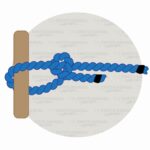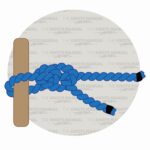The buntline hitch is a historic knot dating to when ships relied on sails to move. Buntline hitches restrained unfurled sails. Such restraint gave the crew better control so they could steer the ship.
Buntline hitches are very secure and tighten when under a load. Sailors didn’t want their knots to come undone when their sails flapped. So, having a knot that tightened further under pressure was helpful.
Today, we use buntline hitches for climbing, tying items on boats, and tying neckties. They are even secure with most modern, slippery synthetic ropes.
Knots similar to the buntline hitch include:
Follow the instructions below to learn how to tie the buntline hitch.
What Is A Buntline Hitch?
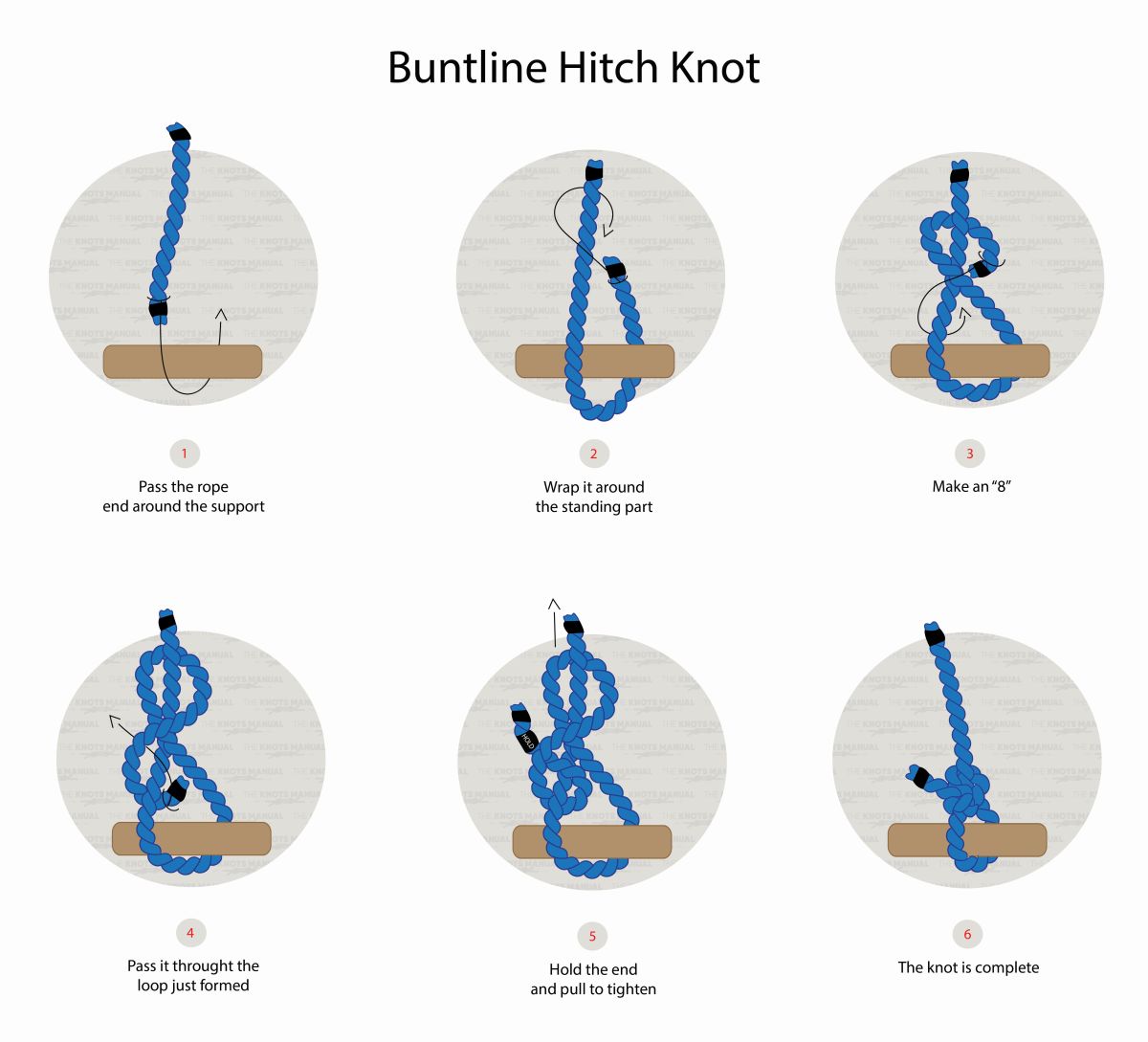
A buntline hitch is created with a clove hitch around the standing end. The knot differs from the one made for the round turn and two half hitches. The clove hitch is inverted — it must turn toward the object, or it becomes much less secure than two half hitches.
Buntline Hitches Were Used For Sailing
The buntline hitch was initially used on square-rigged ships. They were common when ships only operated through sailing. Crew members would use the buntline hitch to secure the foot of a sail to the buntlines. Buntlines are lines that restrain the loose center of an unfurled sail.
These knots are very helpful for restraining the sails. The flapping and shaking of the sails only make the knot more secure.
The Advantages Of Buntline Hitches
Buntline hitches are useful because they are compact, strong, and secure. They are challenging to untie, but that was good for controlling the sails. It would have been dangerous to have knots untie in the middle of using sails.
The compact size of buntline hitches was also advantageous. Their size meant the foot of the sails could be drawn as closely as possible to the bluntline deadeyes.
You can also begin with a round turn in your rope before creating the buntline hitch. Doing so results in a buntline hitch that is more secure and less prone to slipping. Adding an extra half-turn to your buntline hitch also adds more security.
One disadvantage is that the knot is likely to jam and is difficult to release under a heavy load. It is also impossible to tie the knot if the rope is already under a heavy load.
Modern Synthetic Ropes
Buntlines even work well with some modern synthetic lines that are often slippery.
Avoid use with Dyneema Hollow Braid and Samson Amsteel Blue. These rope materials are too slippery and will cause the buntline hitch to be less secure.
How To Tie A Buntline Hitch
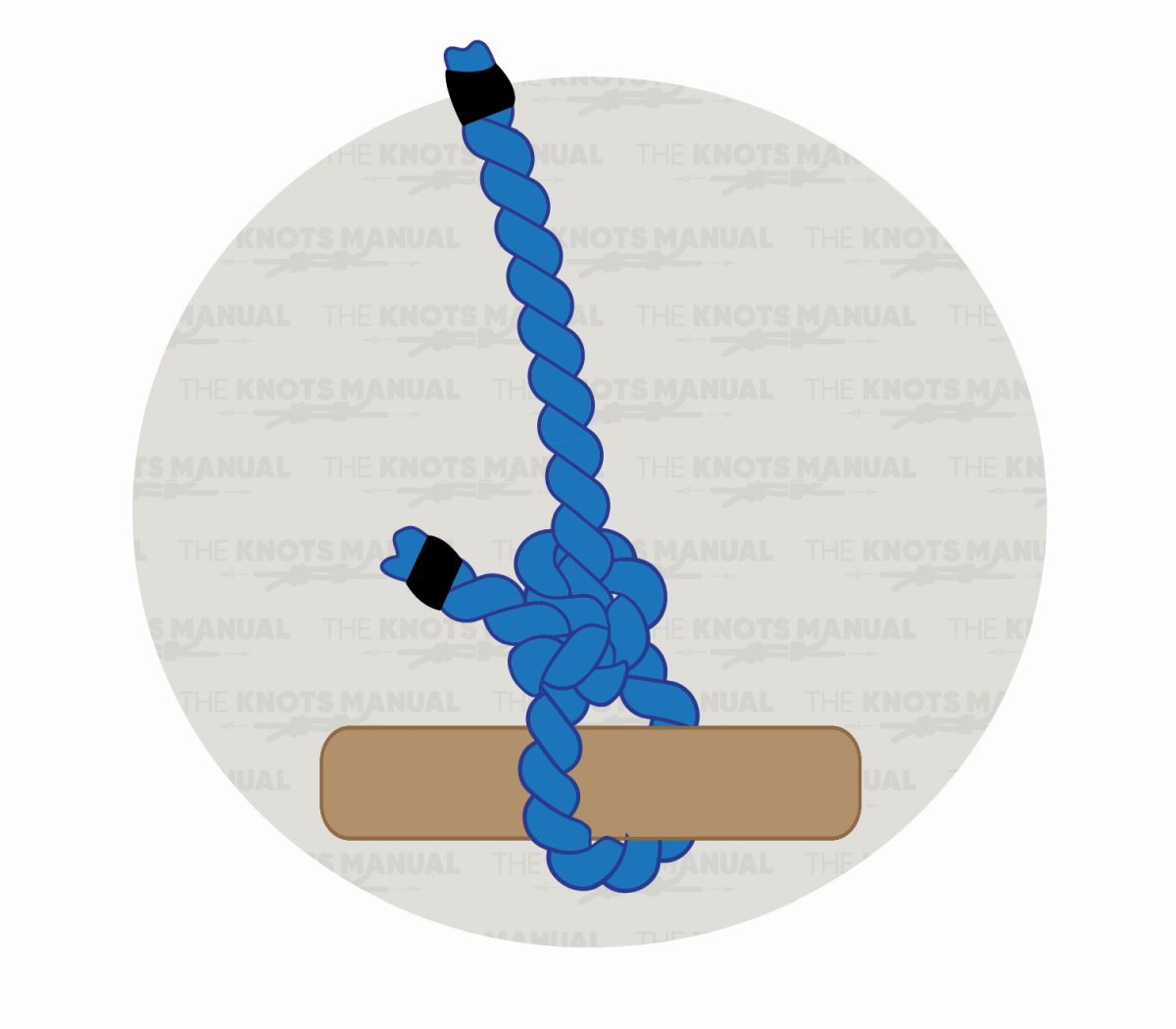
To learn how to tie a buntline hitch, follow these simple steps:
Step 1:
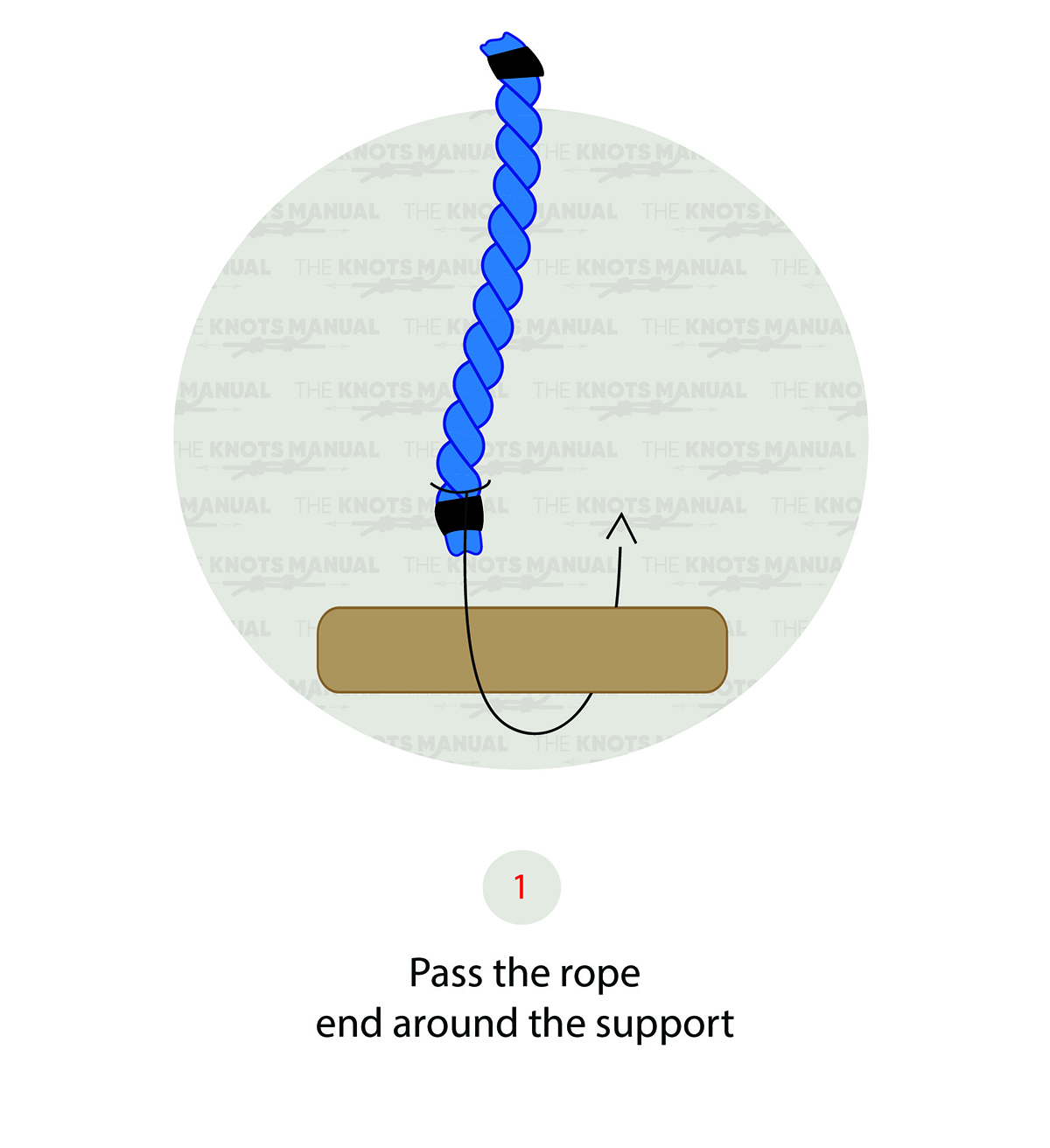
Pass the rope’s working end under the support.
Step 2:
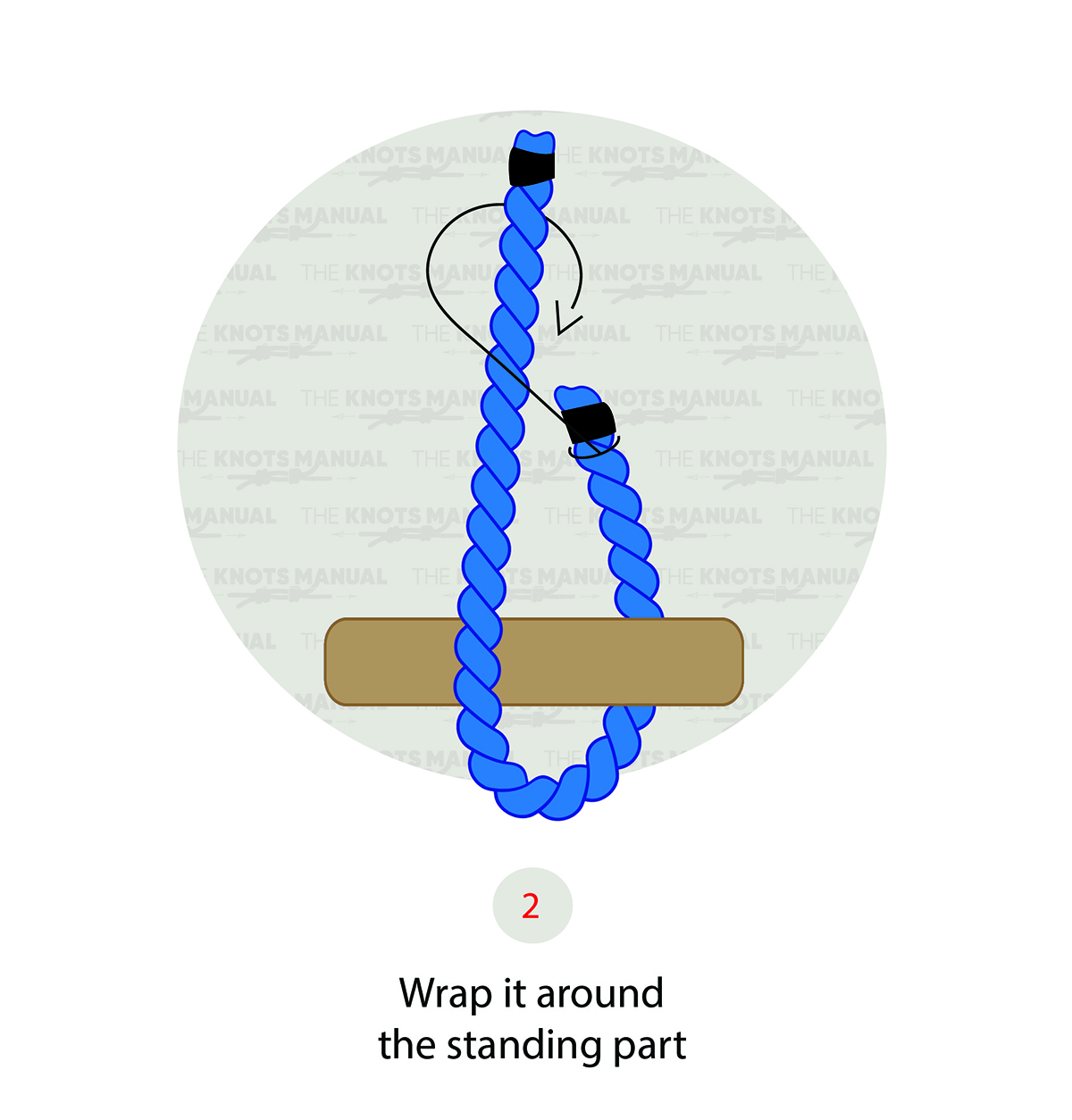
Wrap the working end up and around the standing end to create a loop.
Step 3:
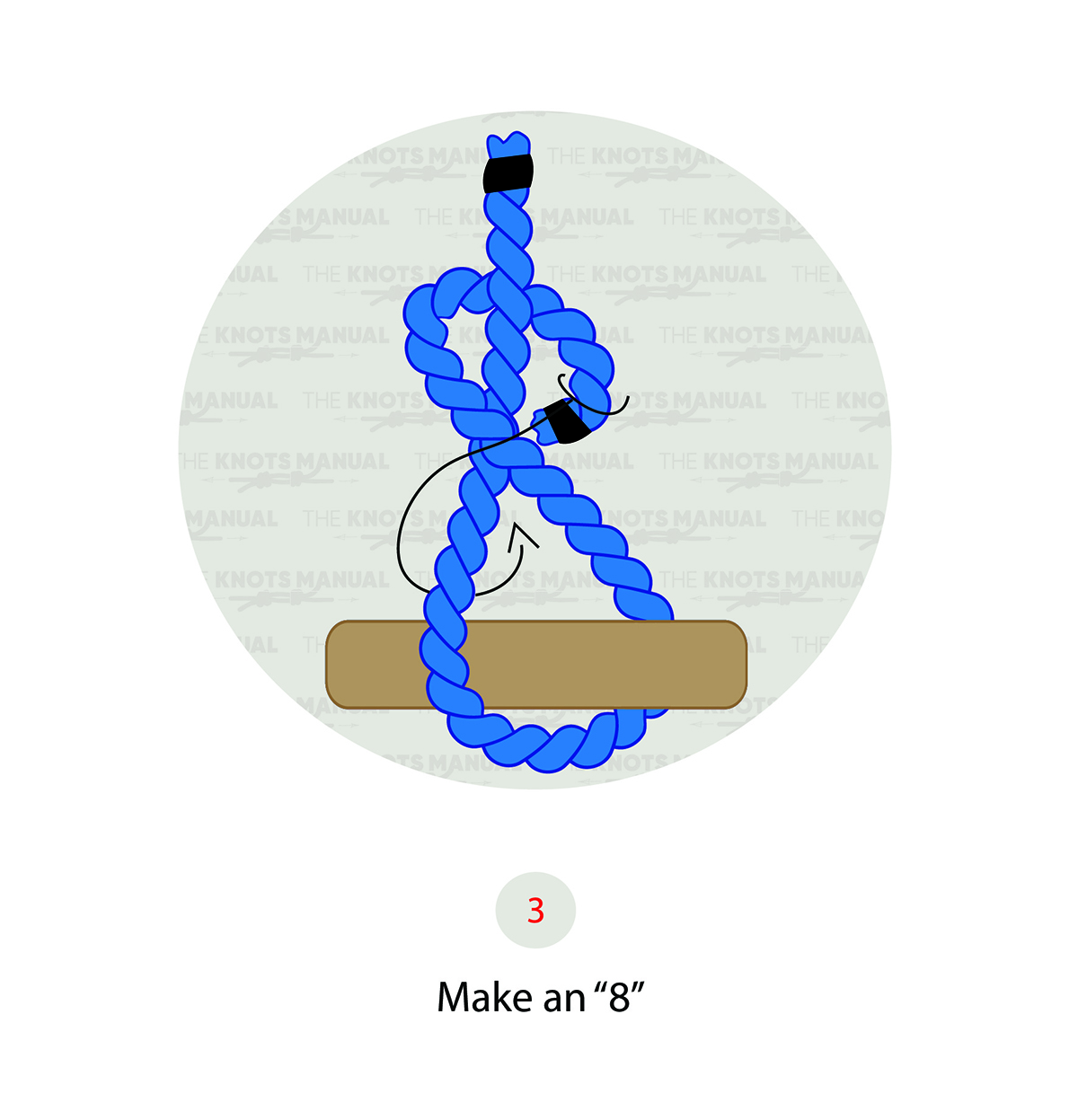
Pass the working end over the standing end, forming a “figure 8.”
Step 4:
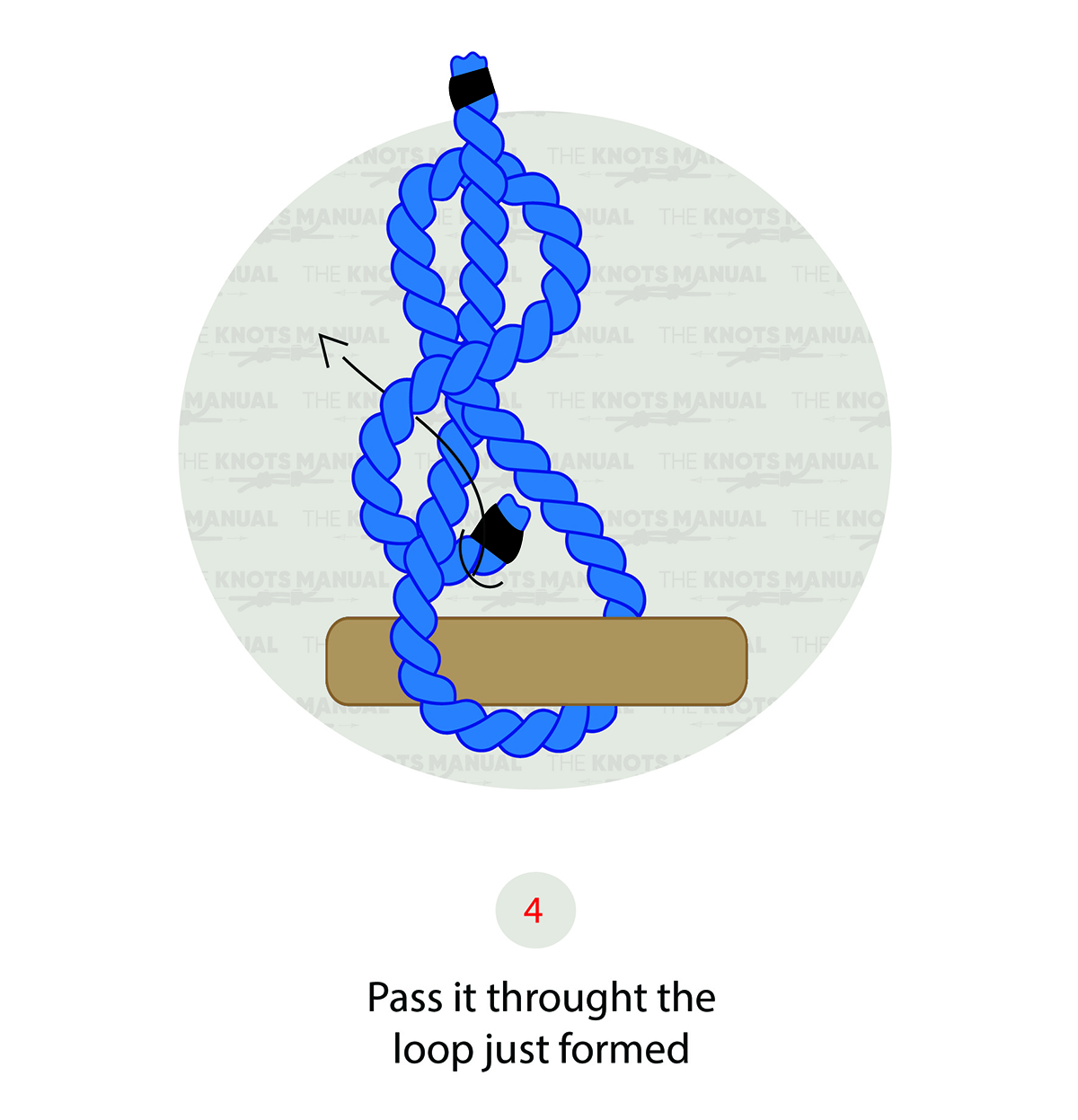
Pass the working end through the loop you just formed.
Step 5:
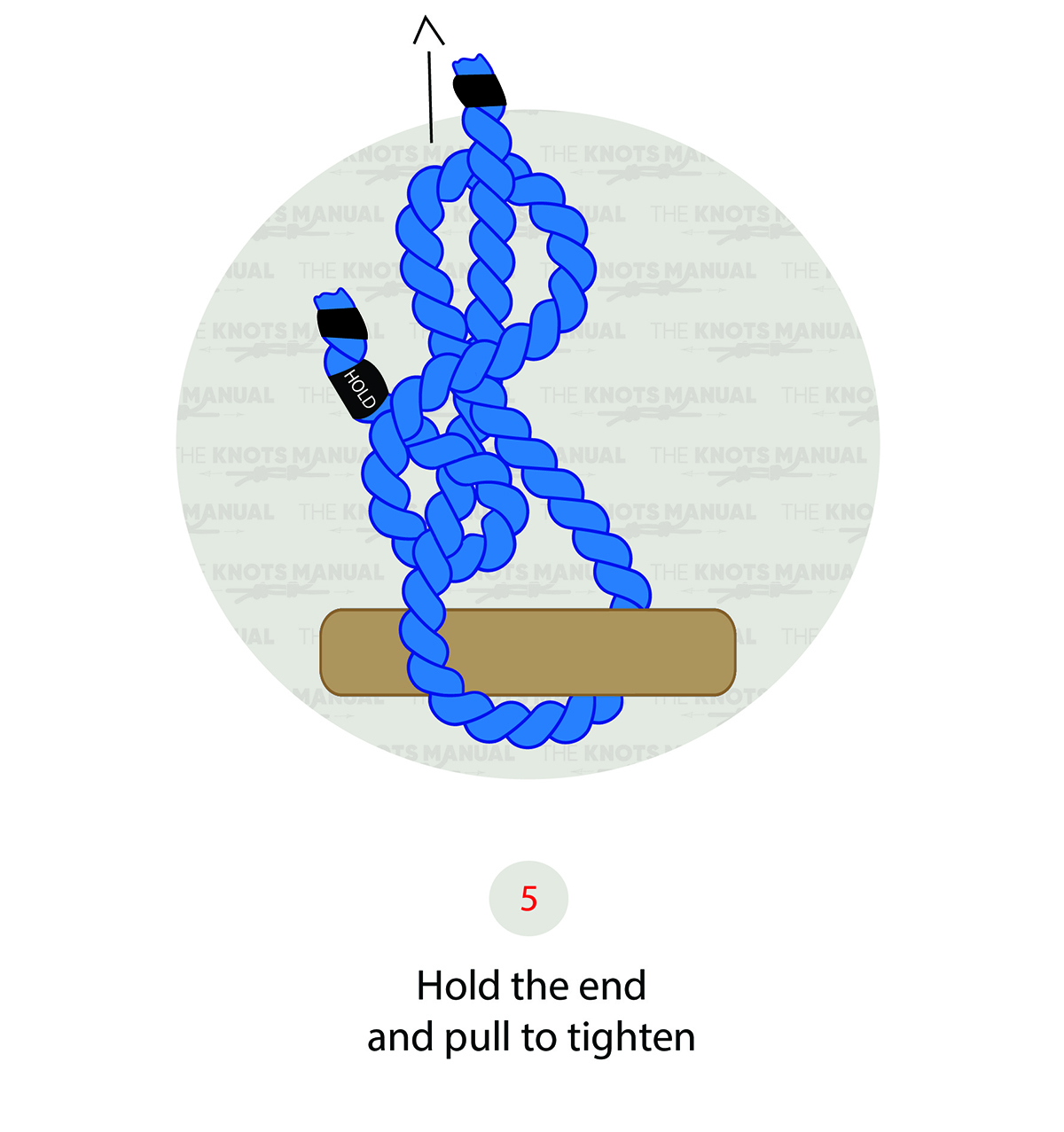
Hold the standing end and pull it to tighten the rope.
Step 6:
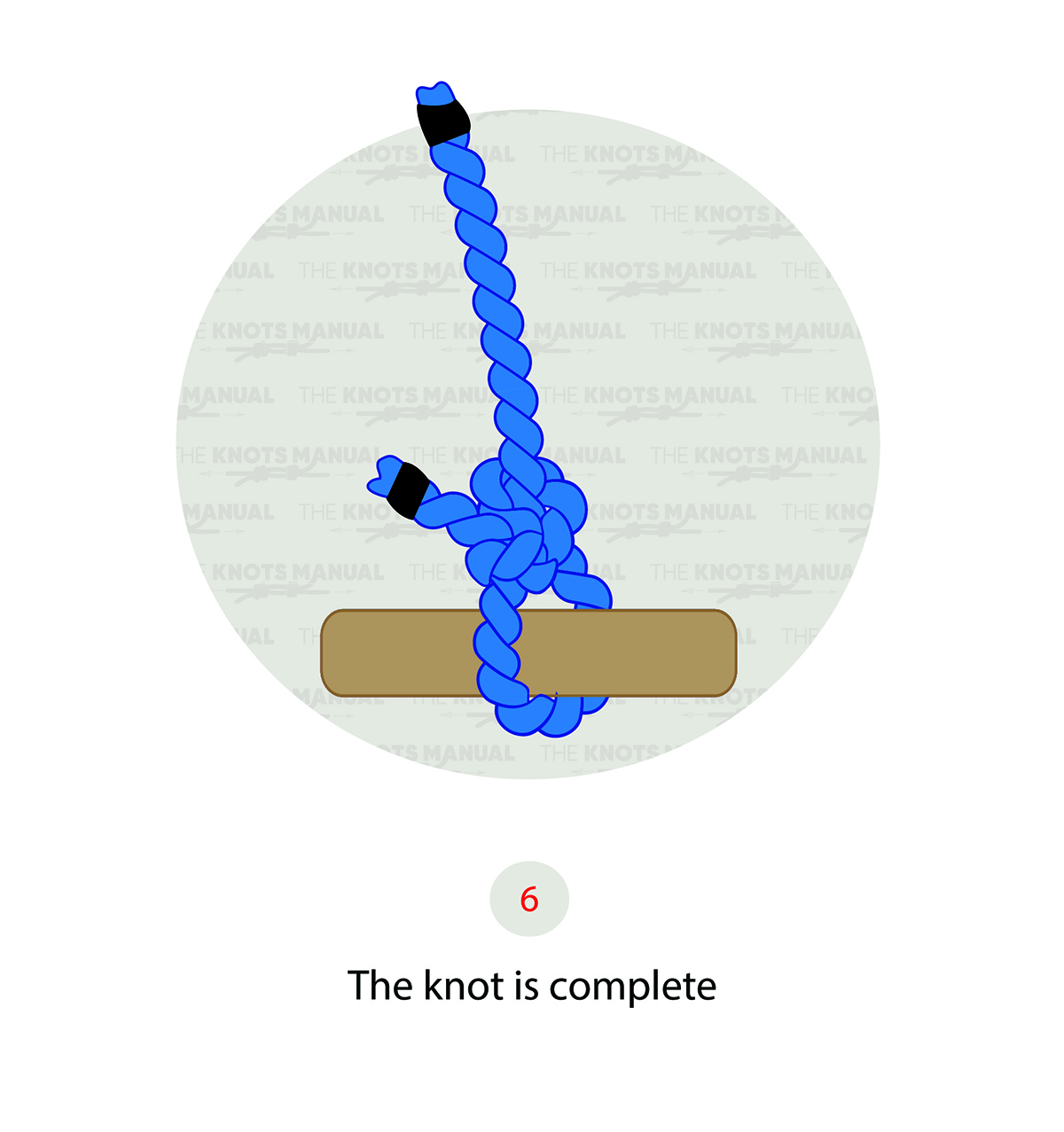
the Buntline Hitch knot is now complete.
The Uses Of A Buntline Hitch
Large ships no longer rely on sails for movement. Still, boaters can use the buntline hitch on smaller sailing vessels.
Today, the buntline hitch is more commonly used for:
- Climbing
- Attaching a halyard to a shackle or sail
- Attaching lines to rods, posts, rings, eyes, or railings
- Neckties (also known as the four-in-hand knot)
- The knot’s ends are positioned parallel to each other
Knots Similar To The Buntline Hitch
Slipped Buntline Hitch: These hitches are only for temporary use. They are more versatile than the traditional buntline hitch. They are secure and less prone to jamming than the standard buntline hitch. You can create the slipped version using a bight on the final step rather than the working end.
EStar Buntline Hitch: These knots were designed for use with synthetic rope materials. You’ll need to use this variation to work with ropes made of Dyneema and similar ropes.
To create this rope, start with a traditional buntline hitch, but don’t tighten it. Second, pass the working end back around the object and back through the knot to the rope’s standing end.
Two Half Hitches: These knots are not likely to jam when under a heavy load. Still, they are less secure than buntline hitches.
Bowline Knot: These knots are not likely to jam even when under a heavy load. They are easier to untie than the buntline hitch. Still, the buntline hitch is the better option when working with buntlines.
FAQs
Do Modern Ships Use Buntline Hitches?
Modern vessels continue to use buntline hitches. Yet, they use them differently from how they used to. Large ships used to rely on the wind and their sails to move. To make sailing safe and effective, sailors needed to use buntline hitches.
Today, large ships do not use sails to move. Instead, they rely on engines and other more efficient technology. Still, buntlines are used on vessels to tie lines to rods, rings, railings, etc.
